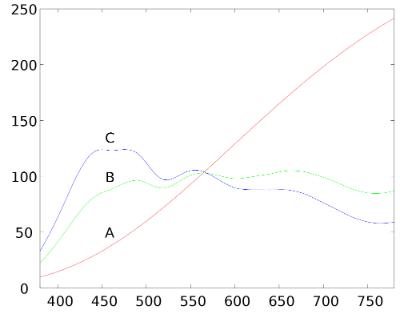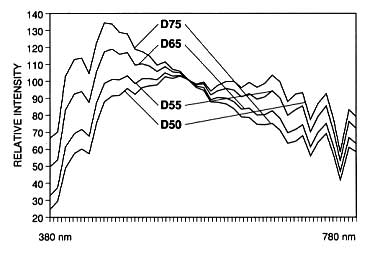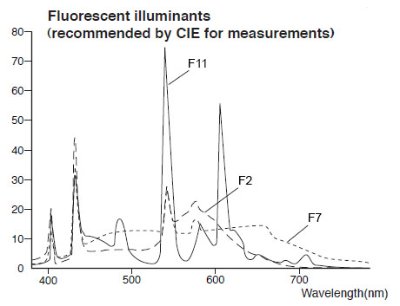13/07/17
Sources and illuminants in colorimetry
The way we view colour does not involve a self-luminous system; instead, the perception of colour depends on the radiation that illuminates it.But what is meant by “luminous radiation”?Different types of luminous radiation exist in nature.One example is sunlight,which depends on the time, latitude and season.It is therefore clear that colour perception changes based on how we visualize the colour itself.
The CIE has therefore defined, over the course of the history of colorimetry, different standards suitable for visualizing colours in an unambiguous manner and improving communication in colour management.
It is therefore important to clarify the meaning of “source” and “illuminant”.
A source is real.An illuminant is a mathematical standard, and also the resultant of the reconstruction of a source of real or imaginary light through the definition of the relative energy emitted by the light source of reference, along the entire emission spectrum.A light source, in contrast, is a real means used to emit light.
In colorimetry, the CIE has standardized certain illuminants to make it possible to visualize colour in an unambiguous manner.By specifying which illuminant is being used, evaluation errors are minimized.But what are the standard illuminants and sources for the CIE?
Without getting too technical, the CIE defines the following standard illuminants and sources:Sources A, B and C; D illuminants and fluorescent lights.
Standard sources A, B and C
- Source A, in practice, is produced by a lightbulb with a tungsten filament with a temperature of 2856 K;
- Source B is used infrequently and is similar to daylight at noon.It is produced by using special filters with Source A;
- Source C represents daylight at noon on a cloudy day.It is also produced by using special filters with Source A.

Standard D illuminants
These are certainly (along with Source A) the most commonly used in the field of colorimetry and are: D50, D55, D65 and D75.They are defined as Daylight, D, and the number indicates the correlated colour temperature expressed in Kelvin.The spectral distribution of such illuminants mimics that of a black body of a similar temperature, “adjusted” for rippling due to the absorption of the Earth’s atmosphere.D illuminants therefore do not represent sources, but rather are mathematical artifices.

Fluorescent lamps
Another type of source used in colorimetry consists of fluorescent lamps and is indicated with F1, F2, F3 up to F12.These lamps are divided into groups based on the spectrum.The most commonly used are F2 (cool white), F7 (daylight fluorescent) and F11 (white fluorescent).

Normally all the colour management tools (light box and software) are able to visualize colour under different illuminants.This makes it possible to communicate the colour under an equivalent illuminant, and also point out any metameric effects.
